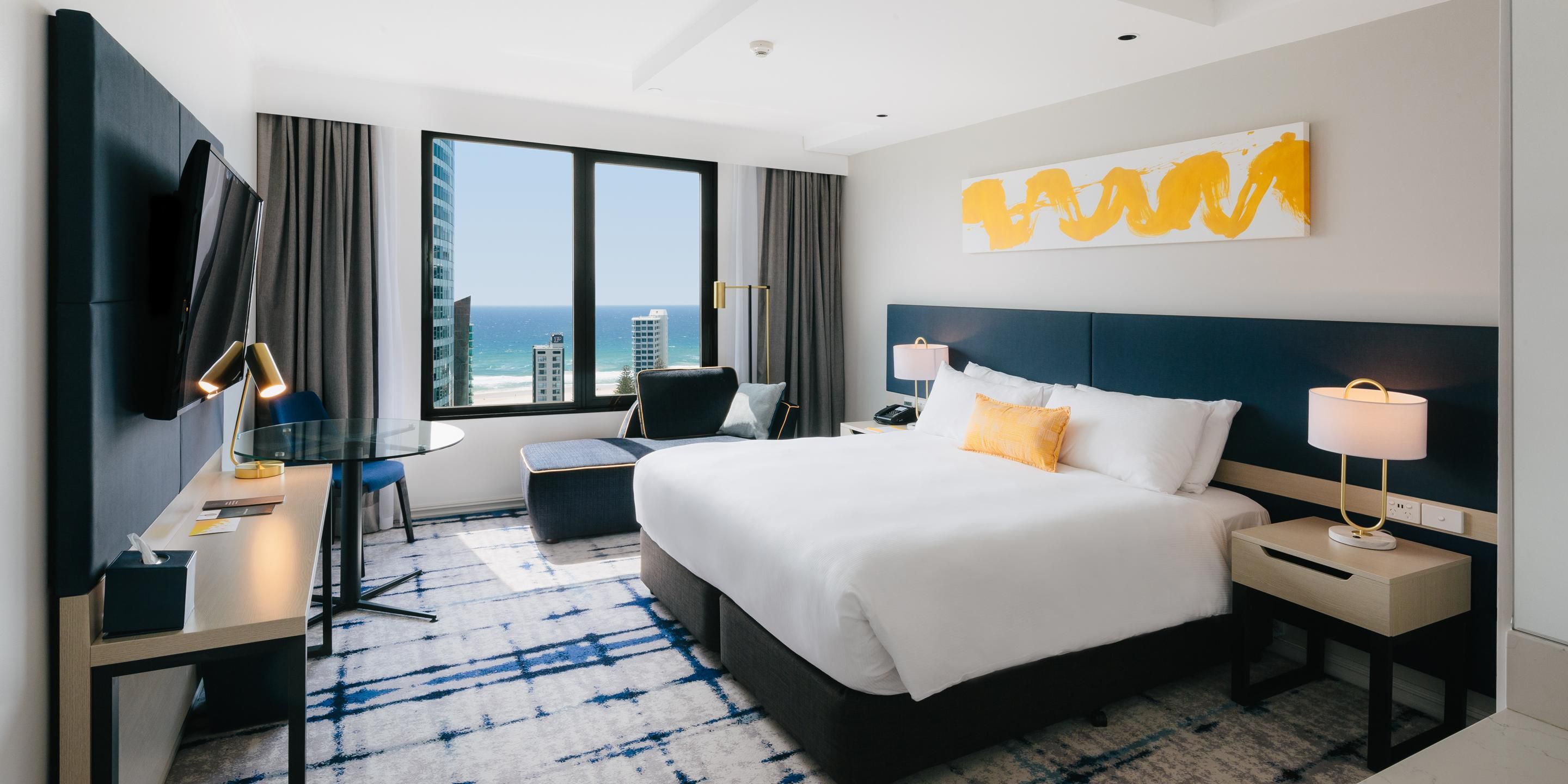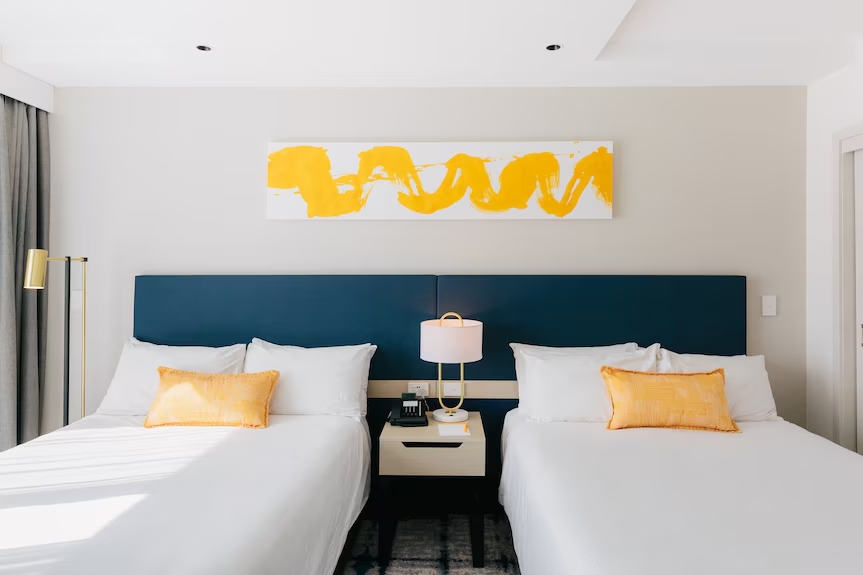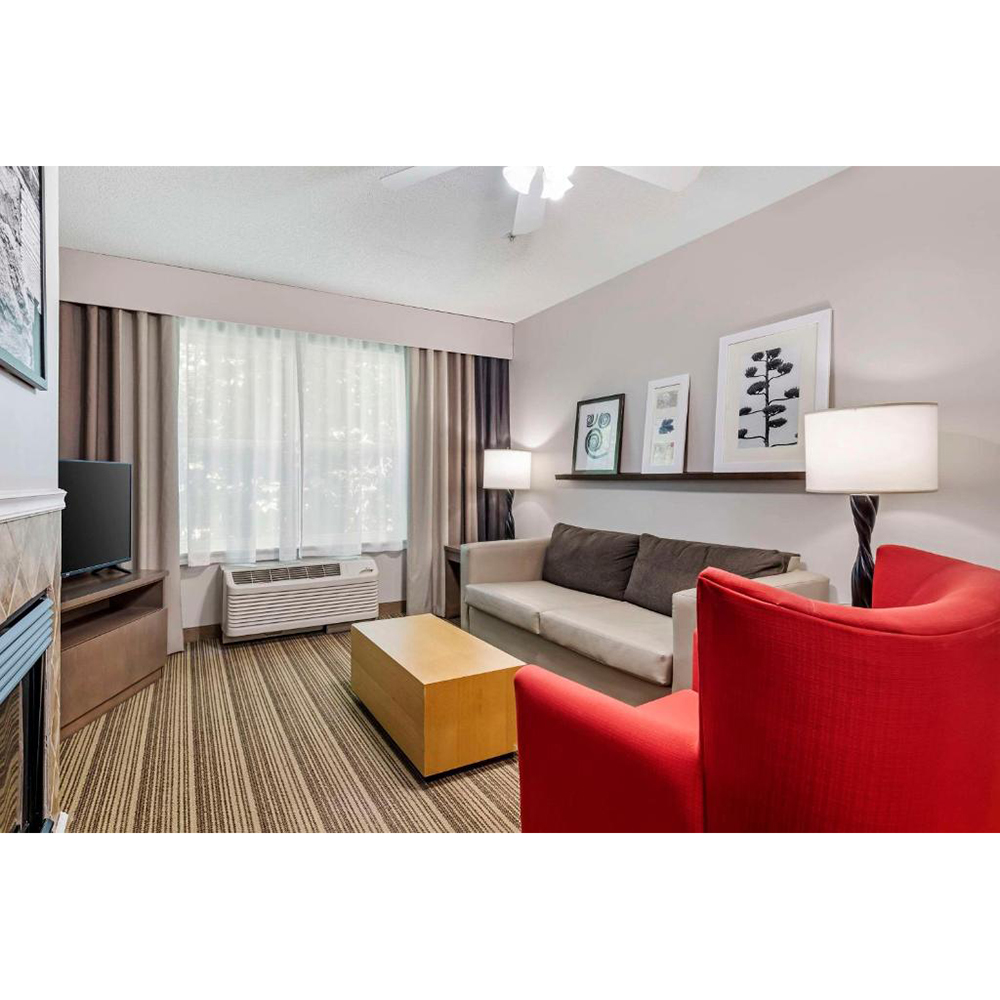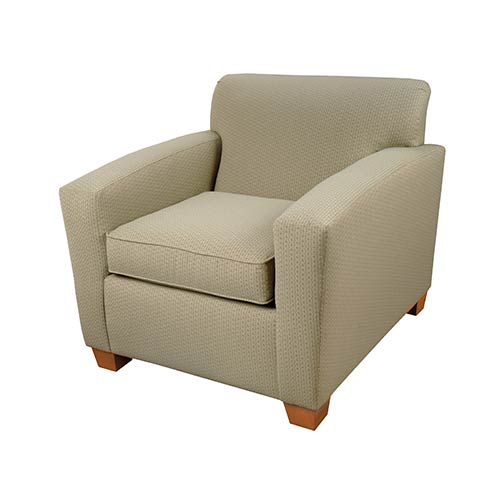One of the most significant trends in hotel furniture design for 2025 is the use of eco-friendly and sustainable materials. With increasing awareness about environmental impact, hotels are prioritizing sustainability. This shift is driven by both consumer demand and a growing commitment to corporate responsibility. Designers are opting for materials like reclaimed wood, bamboo, and recycled metals to create stylish and sustainable furniture pieces. These materials are not only durable but also add a natural and earthy touch to the hotel ambiance, appealing to guests who value eco-conscious choices.
Reclaimed Wood
Reclaimed wood is becoming a favorite choice for hotel furniture designers. Its rustic charm and unique character make it perfect for creating one-of-a-kind pieces that tell a story. Each piece of reclaimed wood carries a history, adding depth and narrative to the design. Using reclaimed wood not only reduces the demand for new timber but also repurposes materials that might otherwise end up in landfills. This sustainable choice aligns with the growing trend of circular economy practices. Expect to see reclaimed wood used in everything from headboards to dining tables in luxury hotels, offering guests a connection to the past while enjoying modern comforts.
Bamboo and Rattan
Bamboo and rattan are making a strong comeback in 2025. These materials are not only sustainable but also lightweight and versatile, allowing for creative design possibilities. They bring a tropical and relaxed feel to hotel interiors, making them ideal for resorts and hotels in exotic locations. The use of bamboo and rattan can transform a space, infusing it with warmth and a sense of adventure. From chairs to light fixtures, bamboo and rattan are being creatively incorporated into hotel furniture designs, providing a fresh and airy aesthetic. Their popularity is also driven by their rapid renewability, making them a sustainable choice for eco-conscious hoteliers.
Technology Integration
Incorporating technology into hotel furniture is another trend shaping the design landscape for 2025. As guests increasingly expect seamless tech experiences during their stays, hotels are integrating smart technology into their furniture to enhance convenience and comfort. This integration is part of a broader trend towards smart hospitality, where technology is used to anticipate and meet guest needs.
Smart Desks and Tables
Imagine a hotel room where the desk or table has built-in wireless charging pads, USB ports, and touch screen controls. These smart features are becoming standard in hotel furniture design, allowing guests to easily charge their devices and adjust lighting and temperature settings with a simple touch. Such innovations not only cater to tech-savvy travelers but also simplify the guest experience, making it more enjoyable. The move towards smart furniture reflects a larger trend of using technology to create personalized and adaptable spaces that respond to individual guest preferences.
Interactive Mirrors
Interactive mirrors are another technological marvel gaining popularity. These mirrors come equipped with touch-screen capabilities, enabling guests to check the weather, browse news, or even watch TV while getting ready. It’s all about enhancing the guest experience and making their stay as comfortable and connected as possible. This kind of technology integration transforms the mirror into a multifunctional device, offering convenience and entertainment in one package. As technology continues to evolve, we can expect even more innovative uses of interactive mirrors, further blurring the line between utility and luxury.
Minimalist and Functional Design
The minimalist design trend continues to dominate in 2025. Hotel furniture is being crafted with simplicity and functionality in mind, focusing on clean lines and uncluttered spaces. This trend not only creates a sense of tranquility but also maximizes space, a crucial aspect for urban hotels. Minimalism in design is often linked to mental clarity, providing guests with a calming environment that promotes relaxation.
Multi-Functional Furniture
Multi-functional furniture pieces are becoming a staple in hotel rooms. Think of a sofa that can be transformed into a bed or a coffee table with hidden storage compartments. These designs cater to the needs of modern travelers who value practicality and space-saving solutions. Multi-functional furniture allows hotels to offer more amenities without compromising on space, a key consideration in densely populated urban areas. This trend is not only about efficiency but also about offering guests a versatile and adaptable environment that can be tailored to their needs.
Neutral Color Palettes
Neutral color palettes are a hallmark of minimalist design. Shades of beige, gray, and white create a serene and timeless atmosphere, allowing guests to relax and unwind. These colors also serve as a versatile backdrop, making it easy to incorporate other design elements and accessories. Neutral tones are favored for their ability to evoke a sense of calm and sophistication, appealing to a broad range of tastes. The use of neutral colors also allows for flexibility in design, enabling hotels to update their decor with minimal effort and cost.
Customization and Personalization
Customization is key in the 2025 hotel furniture design trends. Hotels are recognizing the importance of creating personalized experiences for their guests. This shift towards personalization is part of a broader trend in the hospitality industry, where guest experience is paramount. Custom furniture pieces allow hotels to showcase their unique identity and cater to the specific preferences of their clientele, setting them apart from competitors.
Tailored Guestroom Furniture
Hotels are moving away from one-size-fits-all furniture solutions. Instead, they are investing in tailored guestroom furniture that reflects their brand and resonates with their target audience. From custom headboards to bespoke cabinetry, these personalized touches create a memorable and luxurious experience for guests. Tailored furniture allows hotels to express their brand personality and connect with guests on a deeper level, enhancing brand loyalty and guest satisfaction.
Artisanal and Handcrafted Pieces
Artisanal and handcrafted furniture pieces are gaining popularity as hotels seek to offer something truly special. These pieces are often made by local craftsmen, adding a touch of authenticity and uniqueness to the hotel’s interior design. Guests appreciate the attention to detail and the story behind each piece, enhancing their overall experience. By supporting local artisans, hotels not only enrich their decor but also contribute to the local economy, strengthening community ties. This trend underscores a growing appreciation for craftsmanship and the value of unique, one-of-a-kind pieces in creating distinctive and inviting spaces.
Emphasis on Comfort and Wellness
Comfort and wellness are at the forefront of hotel furniture design for 2025. As travelers prioritize well-being, hotels are focusing on creating spaces that promote relaxation and rejuvenation. This focus on wellness reflects a broader societal shift towards health and well-being, influencing all aspects of design and hospitality.
Ergonomic Furniture
Ergonomic furniture is designed to support the body’s natural posture, reducing strain and enhancing comfort. Hotels are incorporating ergonomic chairs and beds to ensure guests have a restful and comfortable stay. This focus on physical well-being is becoming a standard in luxury hotel design. Ergonomic furniture not only enhances comfort but also promotes health, appealing to guests who are conscious of their well-being. By prioritizing ergonomics, hotels can offer guests a more comfortable and health-conscious stay, enhancing their overall experience.
Biophilic Design
Biophilic design, which emphasizes the connection between humans and nature, is being integrated into hotel interiors. This includes the use of natural materials, indoor plants, and large windows that bring in natural light. By incorporating elements of nature, hotels create a calming and restorative environment for guests. Biophilic design taps into the innate human affinity for nature, promoting relaxation and reducing stress. This approach not only enhances the aesthetic appeal of hotel spaces but also contributes to guest well-being, making it a valuable addition to modern hotel design.
Conclusion
As we approach 2025, hotel furniture design trends are evolving to meet the demands of modern travelers. From sustainable materials to smart technology, these trends reflect a shift towards creating more meaningful and personalized experiences for guests. By staying ahead of these trends, hotels can not only enhance their aesthetic appeal but also ensure guest satisfaction and loyalty. The future of hotel furniture design is about innovation, sustainability, and personalization, offering hotels a competitive edge in the hospitality industry.
Incorporating these design trends will be essential for hotels aiming to remain competitive and offer exceptional hospitality experiences in the years to come. Whether it’s through eco-friendly choices, technology integration, or personalized touches, the future of hotel furniture design is bright and full of innovation. By embracing these trends, hotels can create spaces that resonate with guests, fostering memorable experiences and encouraging return visits. As the industry continues to evolve, these trends will play a crucial role in shaping the future of hospitality design, setting new standards for comfort, style, and guest engagement.
Post time: Sep-26-2025










